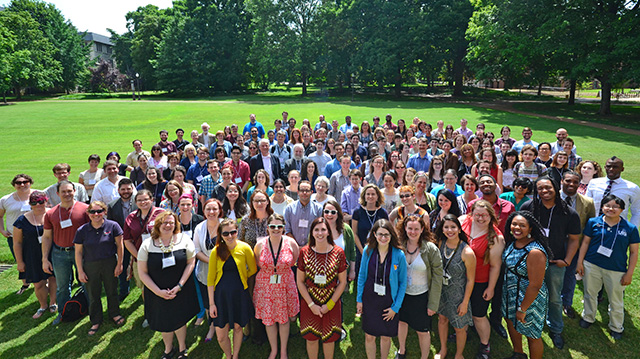AAS Endorses Vision Statement for Inclusive Astronomy

Richard Fienberg Running Hare Observatory
The AAS Council has endorsed the vision statement that emerged from the inaugural Inclusive Astronomy (IA) conference in Nashville, Tennessee. For three days in June 2015, 160 astronomers, sociologists, policy makers, and community leaders met at Vanderbilt University to discuss issues affecting people of color; lesbian, gay, bisexual, transgender, genderqueer/genderfluid, agender, intersex, queer, questioning, or asexual (LGBTIQA*) people; people with disabilities; women; people disenfranchised by their socio-economic status; and anyone in the astronomical community who holds more than one of these underrepresented identities. A key focus of the meeting was examination of issues of intersectionality: the well-established idea that racism, sexism, heterosexism, transphobia, and ableism are often linked (e.g., women of color suffer at the intersection of racism and sexism).
Attendees at the Inclusive Astronomy 2015 conference at Vanderbilt
University in Nashville, Tennessee. Courtesy IA 2015 organizers.
In the months following the IA conference, participants augmented the discussions and workshops held at Vanderbilt with a synthesis of prior studies, input from community members who weren’t at the meeting, and consultation with expert practitioners. This work led to guidelines and recommendations covering four broad topical areas:
1) Removing barriers to educational access, e.g., the use of Graduate Record Exam (GRE) scores in admissions decisions, financial barriers to graduate-school application, stereotype threat, and accessibility problems that impede the ability of all students to directly participate in learning environments.
2) Creating inclusive climates to improve and maintain diversity, e.g., by eliminating microaggressions, honoring diversity without tokenization, using effective and accessible teaching methods, and effectively mentoring members of historically underrepresented groups.
3) Improving inclusion and access to power, policy, and leadership, e.g., by employing strategies on how to play a role in decisions affecting the astronomical community and learning how people in power can be more inclusive in their decision making.
4) Establishing a community of inclusive practice, e.g., using active rather than passive measures to ensure that astronomers’ groups, events, and institutions are inclusive.
The Inclusive Astronomy recommendations are meant to serve as a roadmap for equity and inclusion in astronomy. Just as roadmaps need to be changed as communities grow and evolve, the recommendations will be expanded and revised with significant input from the astronomical community, especially from members of marginalized groups, at future Inclusive Astronomy conferences and semiannual AAS meetings. In other words, they're a work in progress. The AAS Council endorsed the vision statement accompanying the draft recommendations; it describes the underrepresentation problem and explains why equity, diversity, and inclusion are important for the astronomical sciences.
The IA organizers and AAS leadership welcome community feedback so that these recommendations may be improved in the future.


